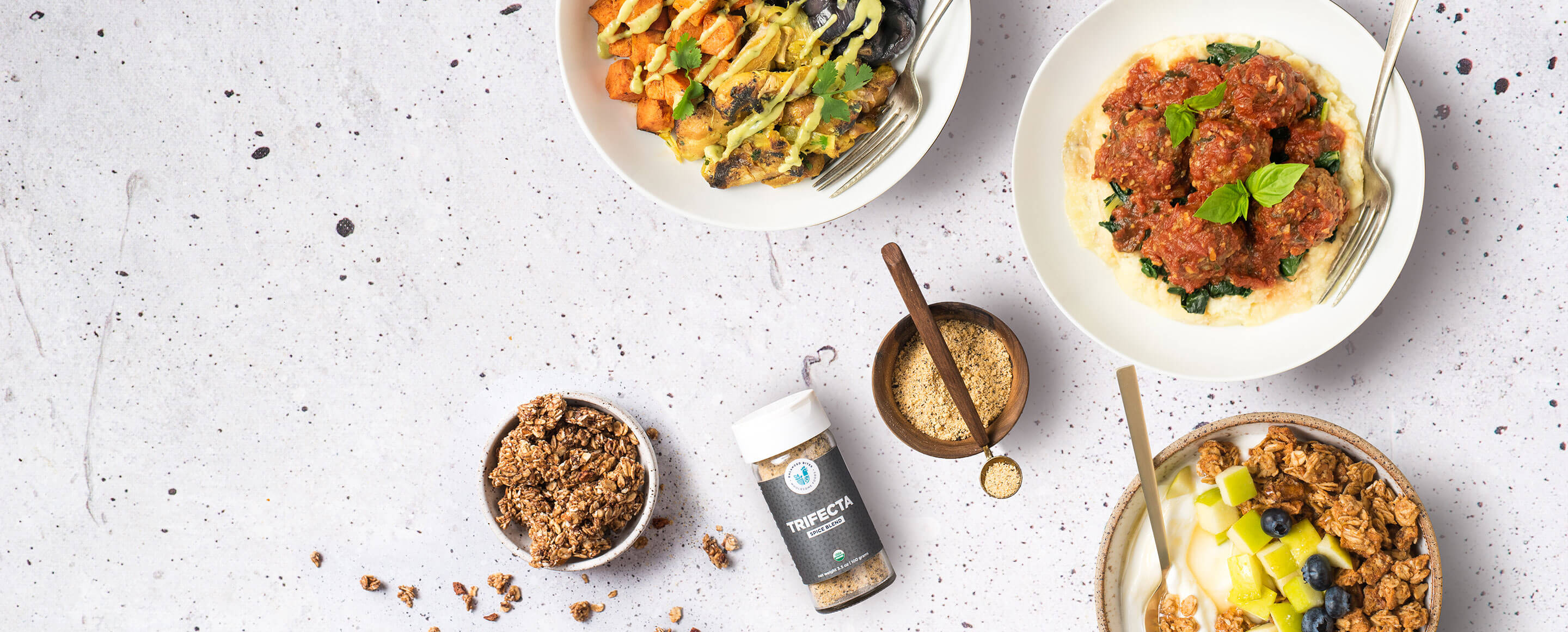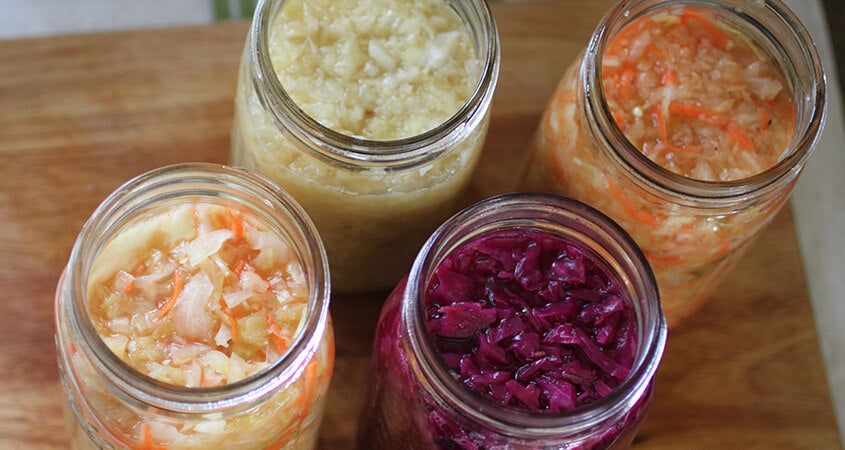I grew up loving sauerkraut. I spent a lot of time toting around with my mom and her friends to shopping malls, and juicy Nathan's hot dog topped with kraut and ketchup was one of my favorite mid-mall-meals. With fries, of course.
Well, fast forward about 25 years and here I am, happily still enjoying sauerkraut, but it's not the canned, lifeless and nutritionally devoid kind I used to devour. This is a raw, unpasteurized, fermented, nutrient-dense, probiotic-rich, fresh and delicious home made sauerkraut. It's amazing (if I do say so myself). The flavors pop and the spiciness of the pepper and garlic adds the perfect level of kick without overpowering the recipe.
This is my favorite way to make raw sauerkraut, but you can certainly follow some of the variations listed for different flavors or try your hand at a new flavor of your own. This recipe is inspired by the raw sauerkraut I fell in love with from Farmhouse Culture brand kraut, which I highly recommend trying if you can get your hands on it.
Ingredients
- 1-2 jalapeño peppers
- 1 large head of green cabbage, sliced into thin strips (set large outer leaves aside)
- 1 Tbsp unrefined sea salt (I like Redmond Real Salt)
- 2 large carrots
- 2-4 cloves of garlic (2 if large, 4 if smaller)
- Black pepper to taste – a few grinds will work
Instructions
Place the jalapeño(s) over an open gas flame or on a grill, turning every minute or so until the skin is blackened and blistered. Remove the pepper from the heat and peel the skin off under cool running water.
Slice the peeled pepper(s) and remove the seeds to your taste. The more seeds you leave, the spicier the recipe will turn out. Set the peppers aside.
Place 1/3 of your sliced cabbage into your large bowl and sprinkle 1 Tsp of the salt over it. Using your hands squeeze and stir the cabbage until some of the water content begins to come out of it and the cabbage seems wet.
Repeat this process adding the remaining cabbage and salt 1/3 at a time to the bowl. Squeeze and stir the mixture until you can see water running off of the cabbage. This will take time and elbow-grease, so be ready to get your hands involved.
Peel and then grate the carrots on a box grater or in a food processor.
Peel and then finely slice the garlic.
Add the shredded carrots, garlic, jalapeños and black pepper to the mixture and combine with your hands.
Fill the 2 jars evenly, pressing the mixture down so that water releases and raises above the line of the vegetables. Continue doing this until the jars are filled with about 2″ of space remaining at the top.
Wedge the large outer leaves of the cabbage you had set aside into the top of the jars so that the mixture is underneath it and the water level raises above the flat cabbage leaf. You will want to use a small pinch bowl or a shot glass as additional weight to keep the mixture down.
Set the filled jars aside on a cookie sheet or in any other large, flat container with an edge so that if there is any spillover you keep it contained. Set the jars/cookie sheet aside in a secure place at room temperature where they will not be disturbed.
Check on your raw sauerkraut every day or two to make sure that the water level has remained above the vegetables and that no vegetables are touching the surface and coming into contact with air. The fermentation process happens under water, so if you do see anything touching the surface, use a clean spoon to remove it. You may also see some growth or mold form around the top of the liquid- this is normal but it's best to remove it when you see it. If you need to add liquid to the jars, add some fresh water to make sure that everything is below a water line. The weights should a lot help with this.
After about one week, remove the weight and top piece of cabbage from the kraut, remove a thin layer of the top of the kraut and give it a taste. It should be sour but probably not “there” yet. Allow the sauerkraut to sit for at least 2 weeks and taste it periodically as you wish to check on it.
Once the sauerkraut tastes as you like it, place the lid on it and store it in the refrigerator. It will last for several months while refrigerated and will not continue to ferment further.
Notes
Variations:
- Plain raw sauerkraut: use just cabbage and salt.
- Traditional raw sauerkraut: use cabbage, salt and caraway seeds (about 1Tbsp for this recipe).
- Sweet and tangy sauerkraut: use red cabbage, salt, raisins or currants, cinnamon and fennel seeds.
- Seasonal fall sauerkraut: use cabbage, salt, green apples, sliced fennel and leeks.
- FODMAP-free carrot-kraut: use just carrots in place of cabbage and salt.


